Looking for a few simple and easy way to save your struggling hanging baskets this summer?
For many gardeners, the arrival of summer also signals the beginning of the end for their hanging baskets. Their once lush plants that were covered in hundreds of blooms just a few weeks back are suddenly now sporting only a few flowers here and there.
Even worse, the dark green foliage, stems and shoots also begin to turn pale, light and yellow. What is perhaps most frustrating of all is that it can happen seemingly overnight. Is it too much or too little water – or too much or too little fertilizer? Or could it simply be that the hanging baskets are running out of the room they need to grow?
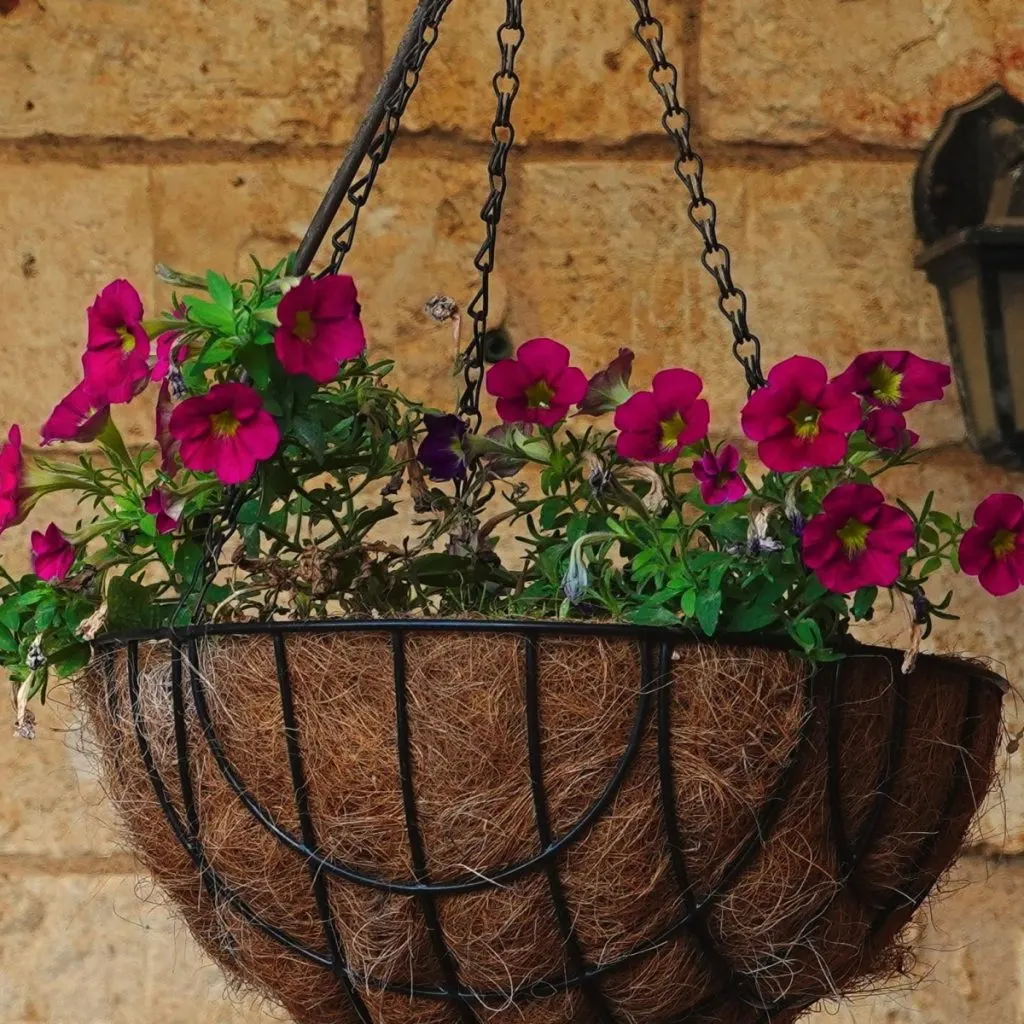
As it turns out – both can play a huge role in the health of your baskets. And the key to reviving your baskets is to quickly figure out which of these issues are affecting your plants – and then fix it. The good news is that it’s easier than you might think to diagnose and correct either problem in short order!
How To Save Struggling Hanging Baskets – 2 Easy Ways To Revive Baskets!
How To Diagnose The Problem – How To Save Struggling Hanging Baskets
As it turns out, there are a few simple signs to help you diagnose if it’s a water and fertilizing issue – or if your plants have simply run out of room to grow in their basket.
More times than not, when hanging baskets begin to fail in mid-summer, it is usually that the plants are outgrowing their container with simply too many roots. And when this happens, the only way to fix the issue is to replant into a larger container – or if not possible, plant the entire plant into your flowerbeds to let them rejuvenate and flourish once again.
If the issue is water and nutrient related, the fix is also easy. The remedy is simply to start giving your plants exactly what they need – and once again they will flourish.
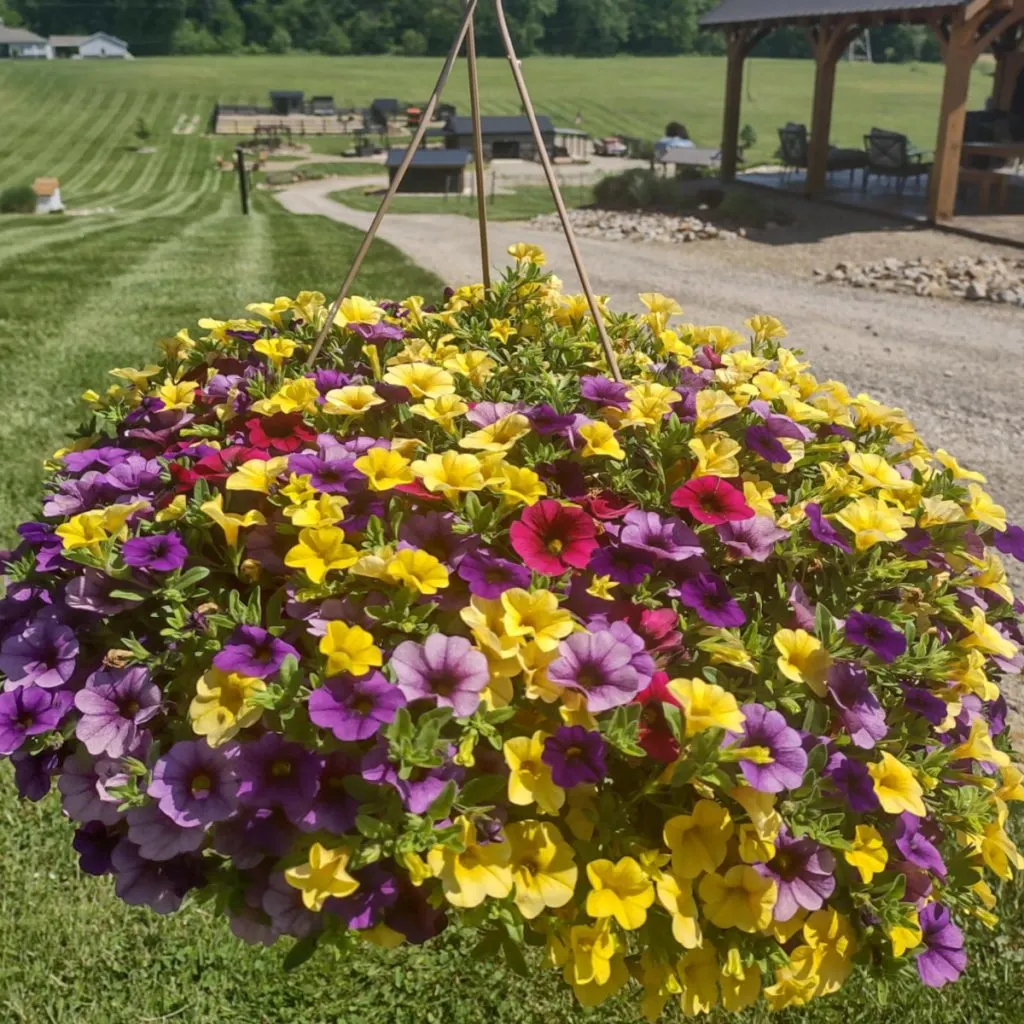
Unlike plants growing in the ground, hanging baskets have a limited amount of soil. And because of that, they can dry out quickly – and run out of nutrients fast as well.
So how can you tell what is ailing your baskets? The best test is the water test. As in, when you water from the top – does the water simply pour right through below and out the bottom? If it does, you can almost be certain that your plants are root bound and have simply outgrown their container.
However, if when you water, the water absorbs into the top, or simply sits stagnant on top – you most likely have a watering / fertilizing and/or drainage issue. With that in mind – here is a look at what to do to revive your plants based upon the result of the water test!
How To Correct A Watering / Nutrient Or Drainage Issue – How To Save Struggling Hanging Baskets
Nutrient and watering issues usually cause plants to turn pale green or even yellow. When the roots of a plant swell, they can’t absorb either moisture or nutrients. They also have trouble doing that when the roots are shriveled due to a lack of water.
Hanging baskets need to be watered daily in most cases. And in extremely hot weather, even twice a day. They also need to be fertilized on a regular basis to get the flowering nutrients they need to flourish.
Listen Below To Our Podcast On How To Keep Hanging Baskets Flowering Big!
When it comes to watering, the best way to success is to use an instant water moisture meter. By simply sticking the probe in the soil down to the root level, you get a quick read of the moisture of the soil. For nearly all hanging basket annual plants, it should be around 50% moist. If it’s much lower, water, and if it’s higher, hold off.
It’s also important that your hanging baskets can drain excess water. Make sure the holes under your plants are free and clear – and if need be drill a few more into it from underneath. When the roots have too much moisture from overwatering or bad drainage, it will cause the plant to be weak and frail, with little to no blooms.
Fertilizing Your Hanging Baskets For Success – How To Fix Struggling Hanging Baskets
As for feeding your plants, the biggest mistake gardeners make in the summer is to not feed consistently. You should be feeding your hanging baskets every seven to ten days with a light dose of liquid fertilizer. But at about half of the recommended strength. This allows for more frequent power, without making the plants overgrow.
Last but not least when fertilizing – select a liquid fertilizer with double to triple the amount of phosphorous and potassium compared to nitrogen. These are the key ingredients to power blooms. Product Affiliate Link: Jack’s Classic Blossom Booster 1.5 lbs, 10-30-20
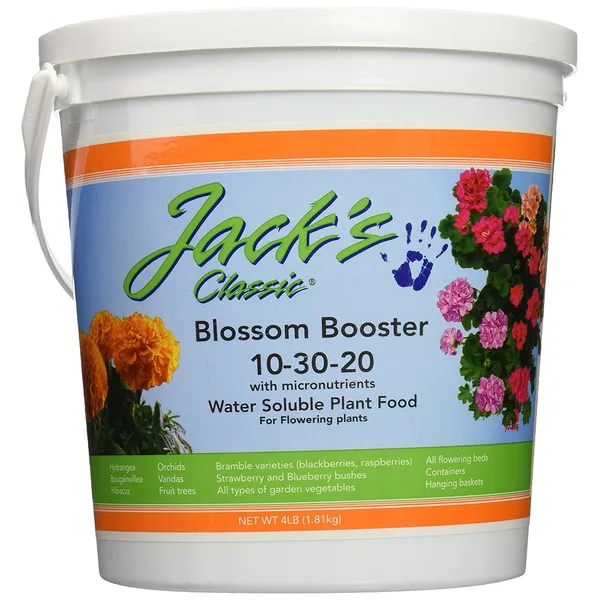
If you use too much nitrogen, you will once again grow the plant and its roots too big for its container. For summer feeding, it’s all about the phosphorous and potassium! See our article: How To Fertilize Hanging Baskets – 2 Simple Secrets To Keep Plants Blooming.
How To Fix An Overgrown Hanging Basket – How To Fix Struggling Hanging Baskets
By the time you purchase plants in the early spring, they have already spent an incredibly long time in their respective containers. And we are not talking just weeks, but in most cases, months!
In order to get container plants to bloom in the early spring, growers start plants months in advance in greenhouses. Sometimes as early as December or January.
And although they are healthy, thriving, and blooming when you first pick them up, their roots also have already started to run out of space. And when that happens, it spells big trouble for the long-term health of your plants.
Signs of Early Trouble And How To Take Action – How To Revive Hanging Basket Plants
The first sign of trouble is the pass-through watering phase. But even though your plants might be suffering, weak and turning pale – it’s certainly no reason to throw them out.
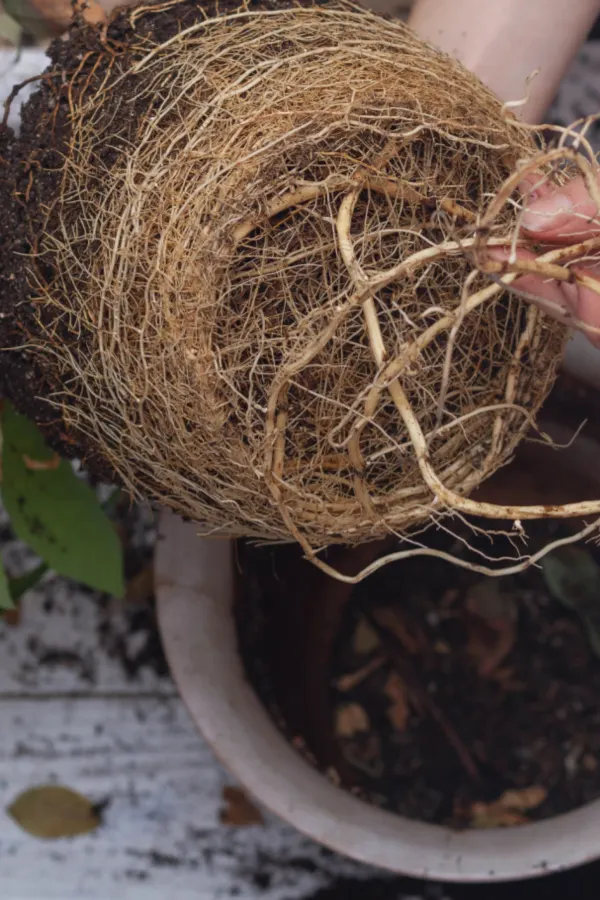
In fact, there are two simple and easy ways to give them a huge new life. The first is to replant into a large container and continue to keep them as hanging baskets. And the second is to simply plant them into your flowerbeds to bring massive color to your landscape.
Replanting Hanging Baskets – How To Save Hanging Basket Plants
Begin by removing the potted plant from it’s original container. In most cases, when plants are root-bound, they will lift easily from their vessel.
Next, break apart the root ball gently, starting from the bottom. You can usually use your hands for this task, but if they are extremely bound, use a sharp knife or blade to slice them free a bit. When you replant hanging baskets, this step is vital in allowing roots and shoots to spread out into their new surroundings.
Give Them Plenty Of Space
If planting into a larger container, try to select a container at least 50% larger. If you can go bigger than that – even better. This will allow enough room for the plant to make it to the end of the growing season in full bloom.
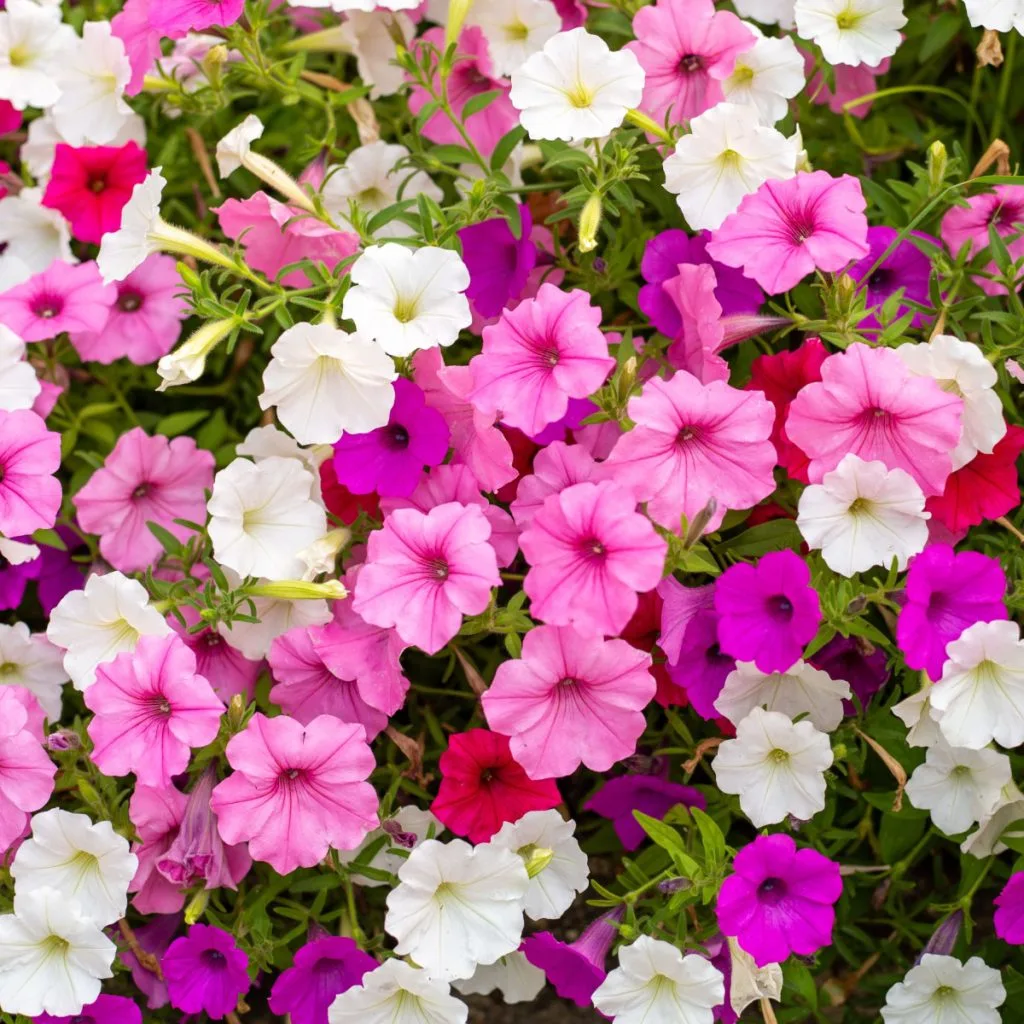
To finish, put new potting soil in the bottom and around the sides and fertilize with a good dose of a phosphorous and potassium heavy liquid fertilizer. Continue to fertilize lightly every 7 to 10 days. As long as you continue to provide good watering, your plant will quickly revive.
Replanting Overgrown Hanging Baskets Into Flowerbeds – How To Fix Struggling Hanging Baskets
If your plant is simple too big for replanting into a basket, you can plant into your flowerbeds. To start, dig a hole in the landscape twice the diameter and 1 and 1/2 times the depth of the root ball. Add in equal parts of compost and soil back into the hole, setting the base of the plant even with the soil line.
Be sure to water the roots deeply when re-planting and cover with mulch to help hold moisture in. When re-planting, this is the perfect time to boost your plants with a little liquid fertilizer. It will amaze you just how fast your once sad plant will readjust and take off.
Here is to saving your hanging basket plants for a big flowering second life this summer!
This Is My Garden
Follow Our Facebook Page For Great Gardening Tips And Advice! This Is My Garden Facebook Page
This Is My Garden is a garden website created by gardeners, for gardeners. Jim and Mary Competti have been writing gardening, DIY and recipe articles and books and speaking for over 15 years from their 46 acre Ohio farm. They publish three articles every week, 52 weeks a year. Sign up today to follow via email, or follow along!
